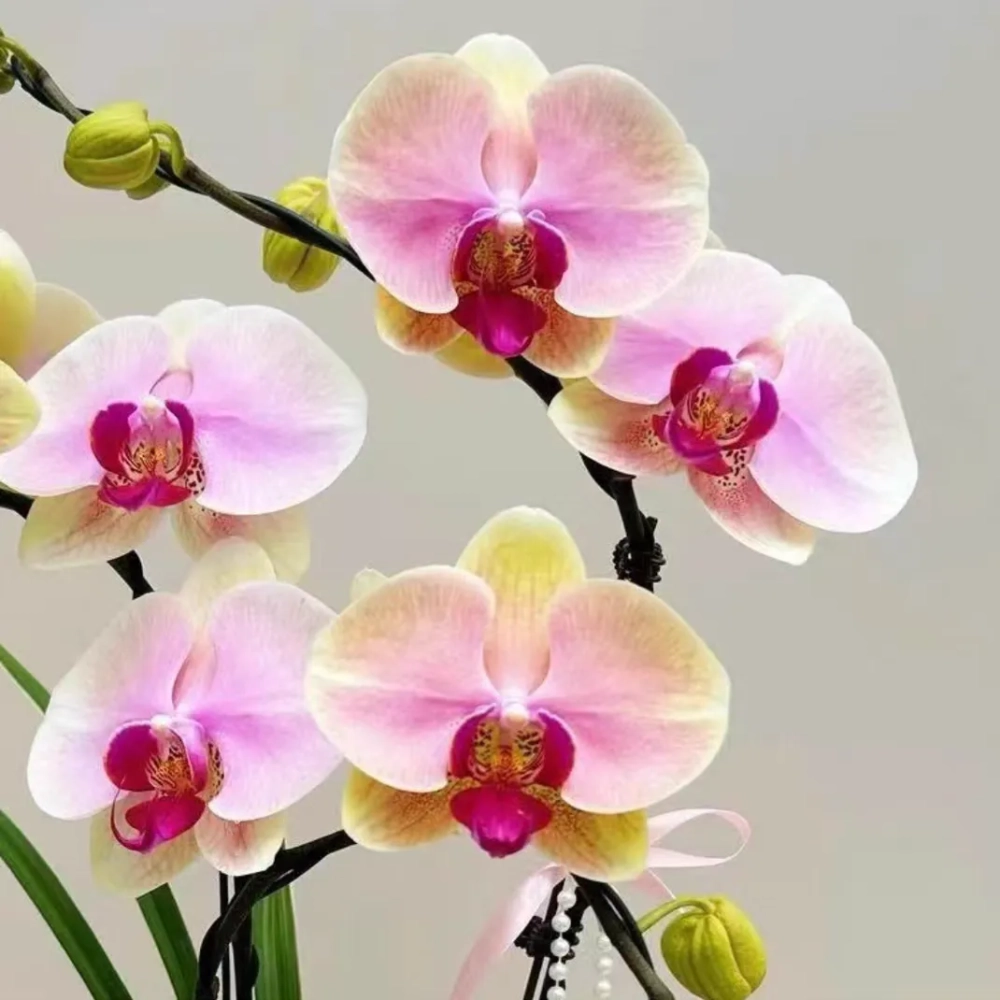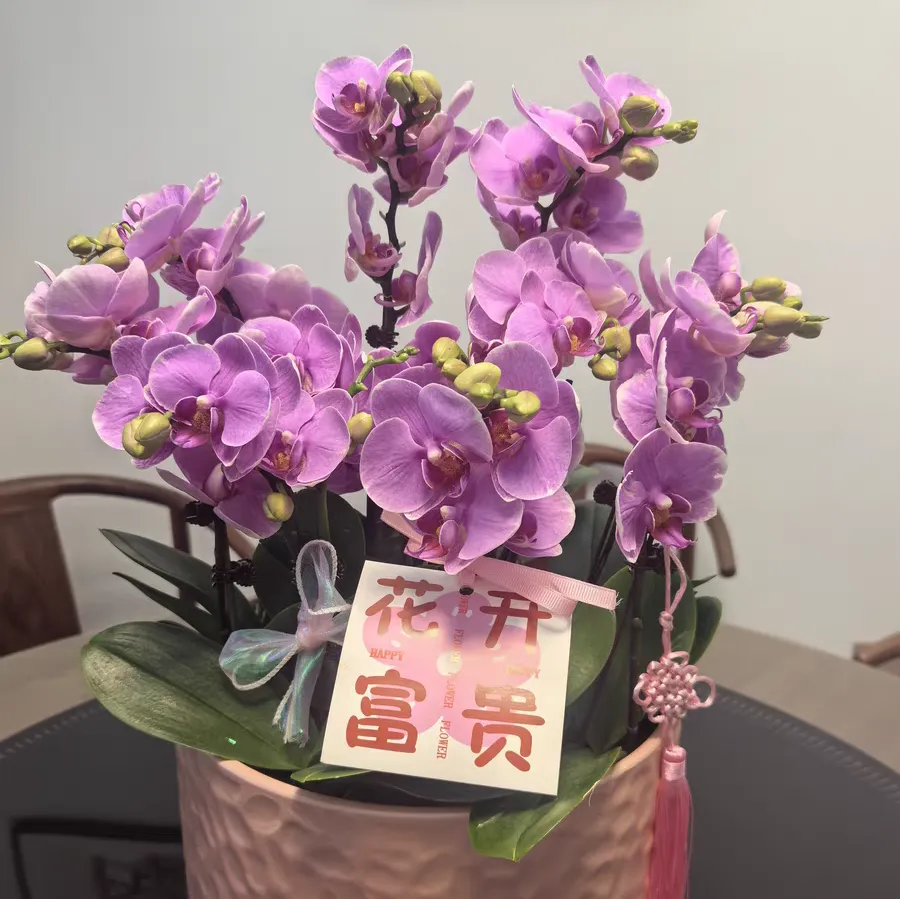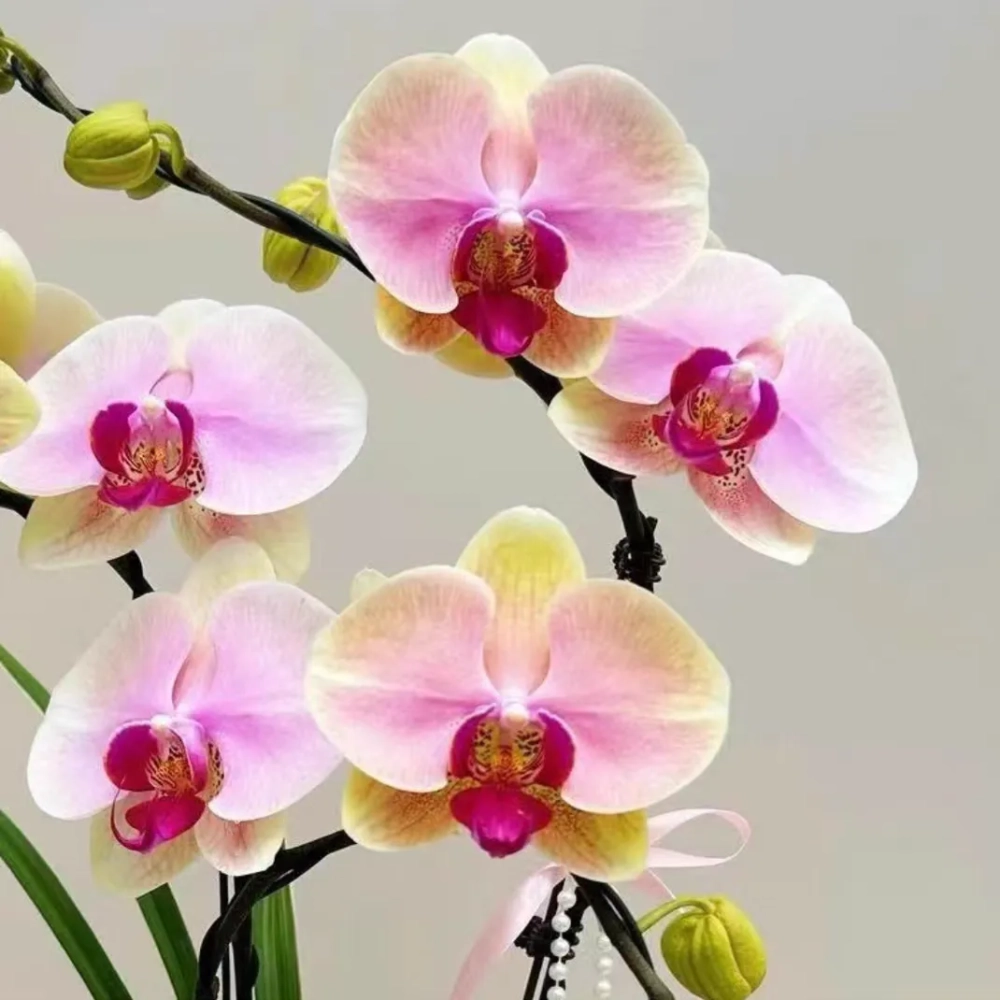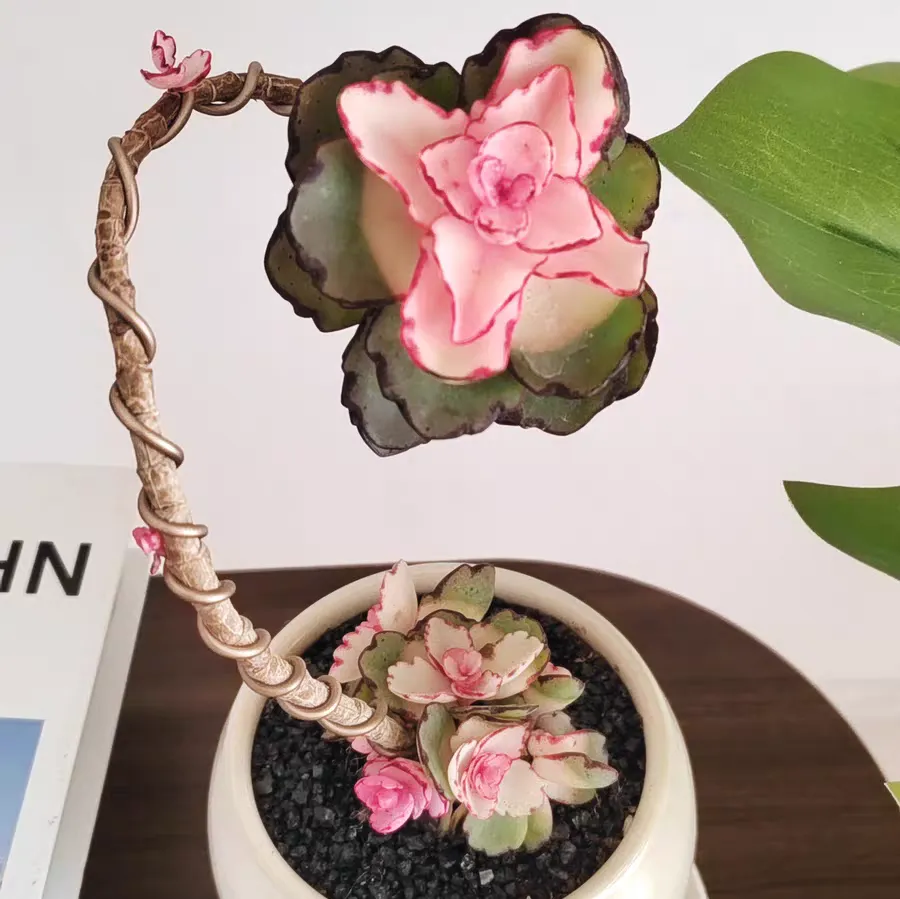Today, I'd like to introduce you to a charming flower - the Asahi Phalaenopsis.
The Asahi Phalaenopsis is a medium-sized flower. Its petals are a bright yellow color, and it has a red lip. The color gradually晕染 (diffuses) and fades from the lip to the edges of the petals. This unique appearance makes it regarded as an auspicious flower symbolizing rapid advancement in one's career, and it's extremely suitable to be placed at home.
The Asahi Phalaenopsis has a relatively long flowering period. It's not difficult to grow, and even novice gardeners can easily handle it. Under normal maintenance, it can bloom from the time between autumn and winter all the way to the end of spring of the following year, which is about 3 to 4 months. However, if it is properly maintained, provided with suitable temperature, light, and nutrients, the flowering period may even be extended!
If you find that the leaves turn yellow during the maintenance process, it may be due to overly frequent watering, which leads to water accumulation and root rot. In this case, you should stop watering immediately, take the plant out of the pot, cut off the rotten roots, disinfect them, and then replant it in a well-aerated planting medium. If it is sunburned due to excessive light, move it to a place with sufficient diffused light. It may also be due to a lack of fertilizer, in which case you should appropriately supplement some dilute liquid fertilizer.
Daily Care:
Watering: Follow the principle of "water thoroughly when the soil is dry". Water thoroughly after the surface of the substrate is dry. Generally, water it 1 to 2 times a week, depending on the environmental humidity.
Lighting: The Asahi Phalaenopsis prefers bright diffused light. It is best to place it indoors near a window where there is no direct sunlight.
Fertilization: Apply a dilute special fertilizer for orchids once every 1 to 2 weeks during the growing period. Increase the application of phosphorus and potassium fertilizers before the flowering period, which is helpful for the formation of flower buds.
Temperature: The most suitable growth temperature is between 18 and 28 degrees Celsius. In winter, do not let the temperature drop below 10 degrees Celsius, otherwise it is likely to be damaged by cold.
Precautions:
1. When watering, avoid splashing water droplets onto the center of the leaves to prevent the center of the leaves from rotting.
2. The best time for repotting is after the flowering period, as this has the least impact on the plant.
3. Keep the air humidity between 60% and 80%. When it is too dry, you can appropriately spray water around to increase the humidity.
How about the Asahi Phalaenopsis? Is it a large - flowered variety?

Share with
Tagged in :




Leave a Reply